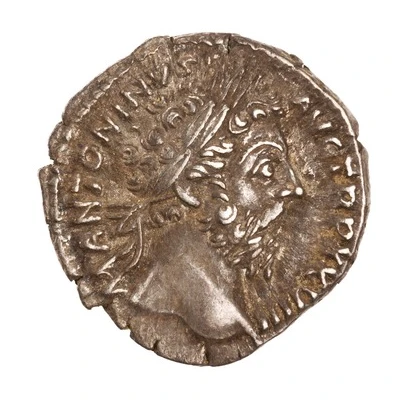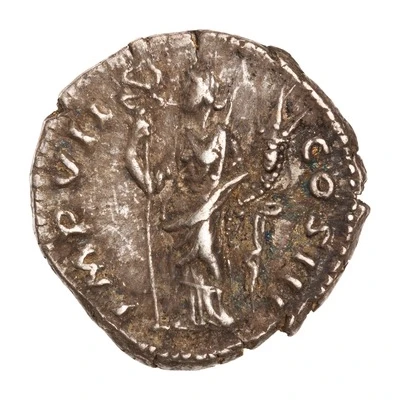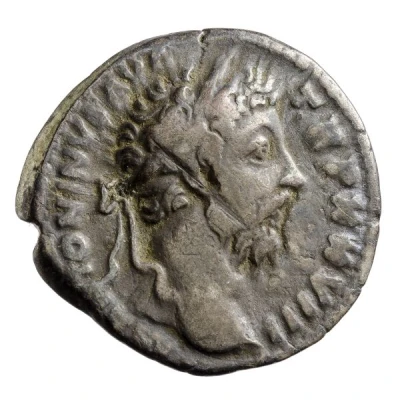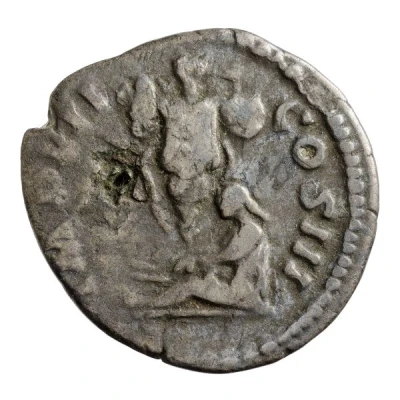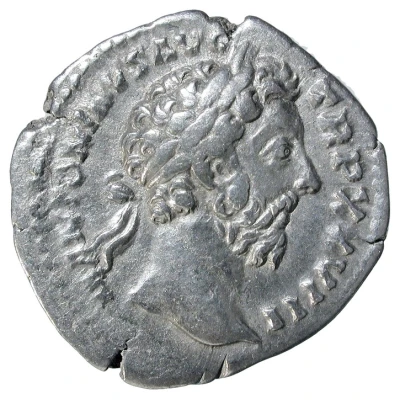
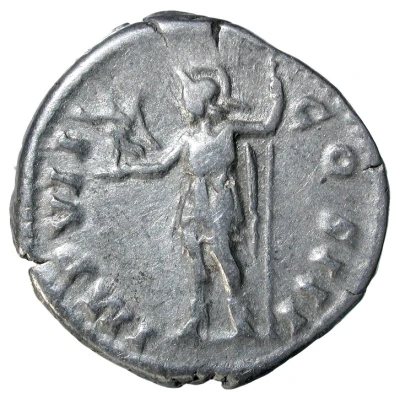

© Museu de Prehistòria de València
Denarius - Marcus Aurelius IMP VII COS III; Roma and Victory
174 year| Silver | 3.4 g | - |
| Issuer | Rome › Roman Empire (27 BC - 395 AD) |
|---|---|
| Emperor | Marcus Aurelius (Marcus Aurelius Antoninus) (161-180) |
| Type | Standard circulation coin |
| Year | 174 |
| Value | 1 Denarius |
| Currency | Denarius, Reform of Augustus (27 BC – AD 215) |
| Composition | Silver |
| Weight | 3.4 g |
| Shape | Round (irregular) |
| Technique | Hammered |
| Demonetized | Yes |
| Updated | 2024-10-05 |
| Numista | N#262974 |
|---|---|
| Rarity index | 97% |
Reverse
Roma, helmeted, draped, standing left, holding Victory in extended right hand and vertical spear in left hand.
Script: Latin
Lettering: IMP VII COS III
Translation:
Imperator Septimum, Consul Tertium.
Supreme commander (Imperator) for the seventh time, consul for the third time.
Comment
Mass varies: 3.22–3.667 g;Example of this type:
Museu de Prehistòria de València
Source:
Online Coins of the Roman Empire (OCRE)
Interesting fact
The Denarius coin featuring Marcus Aurelius (IMP VII COS III; Roma and Victory) was part of a series of coins issued during his reign that depicted the Roman emperor in various guises, including as a military leader, a philosopher, and a god. This particular coin shows Marcus Aurelius wearing a radiate crown, which symbolized his connection to the sun god Apollo, and holding a scepter and a shield emblazoned with the image of Victory. The reverse side of the coin features the goddess Roma seated on a throne, surrounded by symbols of the Roman state, such as the fasces and the imperial eagle. This coin is significant not only because of its beautiful design but also because it reflects the cultural and political values of the Roman Empire during the reign of Marcus Aurelius. The emperor's association with the sun god Apollo, for example, was meant to emphasize his divine right to rule, while the image of Roma on the reverse side represented the idea of Rome as the center of the civilized world. The coin's silver content and weight of 3.4 grams also speak to the economic and monetary policies of the Roman Empire during this time period.
